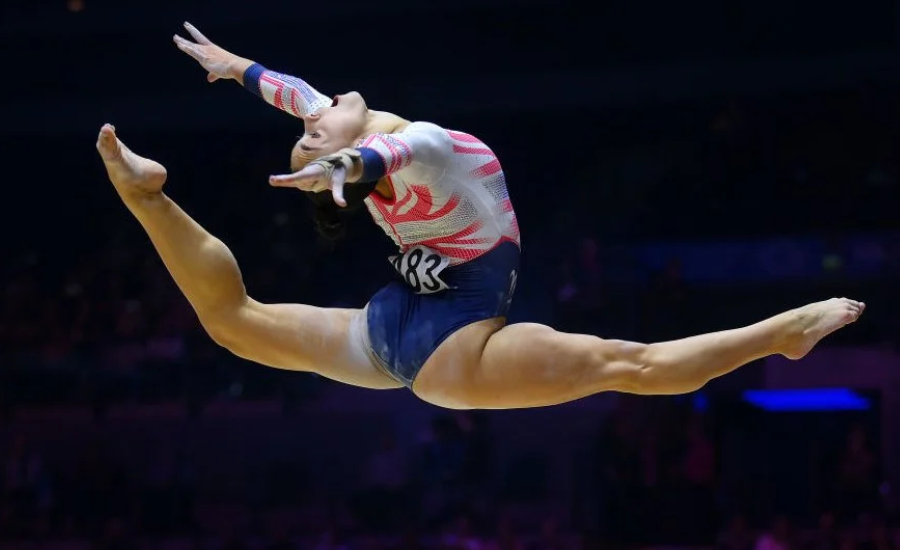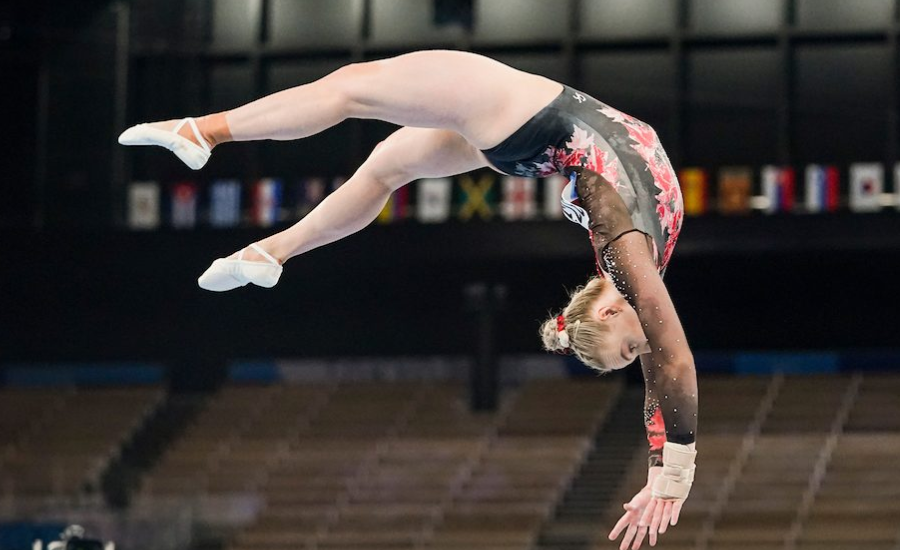
Mila Segnini Gymnastics Pioneer Shaping Excellence and Inspiration
Gymnastics embodies a beautiful fusion of elegance and power, and few exemplify this combination as perfectly as Mila Segnini. Mila Segnini has distinguished herself in the field of gymnastics through her exceptional talent and steadfast commitment to the sport. Her journey extends beyond mere accolades; it reflects a deep-seated passion, remarkable perseverance, and a commitment to pushing the limits of what’s possible in gymnastics.
Mila’s path to prominence in gymnastics is not just about the medals she has earned but also about the inspiring story of her relentless pursuit of excellence. Her experience showcases the essence of gymnastics, where artistry meets athleticism, and where every routine tells a story of strength and grace. For those interested in the intricacies of gymnastics or inspired by exceptional athletic achievements, Mila Segnini’s story offers valuable insights into the dedication and hard work required to excel in this demanding field.
Explore Mila Segnini’s journey and discover how her dedication has shaped her career in gymnastics, offering a blend of historical perspective and personal achievement. Whether you are an aspiring gymnast or simply intrigued by the dedication behind athletic success, Mila’s story is a testament to the extraordinary potential of human effort and passion in the world of gymnastics.
The Evolution of Gymnastics: A Historical Overview

Gymnastics, renowned for its combination of elegance and power, traces its roots back to ancient civilizations. Early forms of gymnastics were integral to the physical training of Greek and Roman warriors, focusing on enhancing strength, flexibility, and agility for military prowess.
The late 19th century marked a pivotal shift in the development of gymnastics, transforming it from a utilitarian practice into a formal sport. This transformation is largely credited to Friedrich Ludwig Jahn, often hailed as the father of modern gymnastics. Jahn’s innovative approach introduced several key apparatuses, including the parallel bars and the horizontal bar, which became staples in the sport. His vision was to cultivate both physical fitness and mental discipline through rigorous training and structured routines.
The early 20th century witnessed gymnastics gain global recognition, with the inclusion of artistic gymnastics in the Olympic Games beginning with the 1896 Athens Games for men. It wasn’t until the 1928 Amsterdam Games that women’s artistic gymnastics was introduced, marking a significant milestone in the sport’s evolution.
Over the decades, gymnastics has continued to evolve, giving rise to new disciplines such as rhythmic gymnastics and trampoline gymnastics. Each of these variations has added its unique elements to the sport, showcasing a remarkable blend of artistry and athleticism. Today’s gymnasts demonstrate exceptional skill and creativity, competing on both national and international stages and pushing the boundaries of what is possible within the sport.
From its ancient origins to its current global prominence, gymnastics remains a dynamic and evolving field, reflecting the continual advancement of both its techniques and its athletes.
Exploring the Diverse Disciplines of Gymnastics

Gymnastics is a diverse sport encompassing various disciplines, each presenting its own unique challenges and skill requirements. Here’s an overview of the different types of gymnastics:
Artistic Gymnastics: This is arguably the most recognized form of gymnastics, known for its combination of strength, flexibility, and artistic performance. Competitions in artistic gymnastics feature several events, including the vault, balance beam, floor exercise, and uneven bars. Athletes in this discipline are judged on their ability to perform complex routines that showcase both technical precision and expressive artistry.
Rhythmic Gymnastics: Distinguished by its emphasis on grace and fluidity, rhythmic gymnastics involves the manipulation of various apparatus, such as ribbons, hoops, balls, and clubs. This discipline blends elements of dance with gymnastics, requiring athletes to demonstrate exceptional coordination and elegance while performing choreographed routines.
Trampoline Gymnastics: Focused on aerial skills, trampoline gymnastics involves executing high-flying acrobatics on a trampoline. Competitors showcase their ability to perform complex flips and twists while achieving impressive height and control during their routines.
Acrobatic Gymnastics: In this discipline, teamwork and synchronization are key. Acrobatic gymnastics features pairs or groups performing routines that include impressive lifts, balances, and throws. The sport highlights the athletes’ strength, balance, and coordination as they work together to execute visually stunning routines.
Each of these gymnastics disciplines presents its own unique rewards and demands, requiring dedication and skill from athletes of all levels. Whether through the artistic routines of artistic gymnastics, the elegant apparatus work in rhythmic gymnastics, the high-flying feats of trampoline gymnastics, or the synchronized displays of acrobatic gymnastics, the sport presents a vibrant array of performances and athletic accomplishments.
Mila Segnini’s Remarkable Gymnastics Journey

Mila Segnini’s foray into the world of gymnastics began when she was quite young. From the moment she stepped into her first gymnastics class, it was clear that Mila possessed an exceptional natural talent that captivated her coaches and set her apart.
Her commitment to gymnastics soon became evident as she embraced rigorous training schedules. Mila devoted countless hours to honing her skills and perfecting her routines, displaying a level of dedication that underscored her passion for the sport. Despite the intense training, she encountered various challenges that tested her perseverance and resolve.
Initially competing in local events, Mila quickly established herself as a standout performer. Her routines were not merely technical feats but also displayed a unique blend of artistry and dedication that resonated with audiences and judges alike.
Throughout her competitive journey, Mila experienced both triumphs and setbacks. Each competition, whether a victory or a defeat, contributed to her growth and resilience. These experiences were crucial in shaping her drive to continually advance and refine her gymnastics abilities.
Family support played a critical role in Mila’s development. Her family’s enthusiastic encouragement at every competition helped bolster her confidence and provided a solid foundation for her progress.
Mila’s relentless pursuit of excellence opened doors to numerous opportunities in the gymnastics arena. Each opportunity brought her closer to realizing her full potential and achieving notable success in the sport. Her journey highlights the impact of commitment, perseverance, and the steadfast support of those close to her.
Training and Techniques Employed by Mila Segnini
Mila Segnini’s approach to training is as multifaceted as her gymnastics routines. Her regimen incorporates a diverse array of exercises designed to boost her strength, flexibility, and overall endurance, ensuring peak performance in every competition.
Each training session starts with rigorous conditioning exercises, which are essential for developing core stability and leg strength. These foundational elements are crucial for executing the high-flying and complex maneuvers that are characteristic of her performances.
In addition to conditioning, Mila dedicates a significant portion of her training to gymnastics-specific drills. These drills focus on refining her technique, from perfecting handstands to mastering intricate tumbling sequences. Consistent repetition and meticulous attention to detail are central to achieving the precision required for flawless routines.
Mental preparation is another cornerstone of Mila’s training. She employs visualization techniques to enhance her confidence and mental resilience before competitions. This mental rehearsal helps her maintain focus and composure, even under the intense pressure of competitive environments.
Recovery is a key component of Mila’s holistic training approach. Regular stretching routines and designated rest days are integral to maintaining muscle health and preventing injury.
Achievements and Awards of Mila Segnini

Mila Segnini’s illustrious career in gymnastics is defined by a series of remarkable accomplishments that underscore her extraordinary talent and unwavering dedication. Her journey through the sport is distinguished by a collection of prestigious awards and accolades that highlight her exceptional skills and commitment.
Throughout her career, Mila has amassed an impressive array of medals, reflecting her dominance in both national and international arenas. Each accolade represents not only her individual prowess but also the countless hours of rigorous training and relentless perseverance that have contributed to her success.
A particularly notable achievement came at the World Championships, where Mila achieved multiple podium finishes. This prestigious event was a testament to her elite status in the global gymnastics community, demonstrating her ability to excel at the highest level of competition.
Beyond her individual successes, Mila’s contributions to team events are equally significant. Her role as a leader and collaborator has been instrumental in driving her teams to victory in major tournaments, showcasing her ability to inspire and elevate her peers.
Mila Segnini’s accomplishments are a significant source of inspiration for up-and-coming gymnasts. Her story exemplifies how a combination of passion, dedication, and hard work can lead to extraordinary success in the world of gymnastics.
Expert Advice for Aspiring Gymnasts from Mila Segnini
Aspiring gymnasts can gain invaluable insights from Mila Segnini’s experiences and success in the sport. Here are some essential tips drawn from her journey that can help you excel in gymnastics:
- Embrace the Journey: Mila stresses the importance of appreciating the process of learning and improving. Progress in gymnastics is gradual, and developing skills requires time and patience. Embracing this journey fosters continued motivation and dedication.
- Master the Basics: Building a strong foundation in fundamental skills is crucial. Mila advises focusing on perfecting basic techniques, as these are the building blocks for more complex maneuvers. Consistent practice is key to developing muscle memory and boosting confidence.
- Cultivate Mental Strength: Alongside physical training, mental preparation plays a vital role. Mila highlights the value of visualization techniques—imagining yourself performing routines with precision can significantly enhance your performance during competitions. This mental practice boosts confidence and alleviates anxiety.
- Seek Constructive Feedback: Openly receiving and utilizing feedback is essential for growth. Mila encourages athletes to welcome constructive criticism, as it helps pinpoint areas for improvement and accelerates development.
- Foster a Passion for the Sport: Mila’s final piece of advice is to maintain a genuine love for gymnastics. When passion drives your training, it transforms challenges into exciting opportunities and makes each session a rewarding experience rather than a routine obligation.
Overcoming Challenges in Gymnastics: Strategies for Success

Gymnastics, known for its high demands and rigorous standards, presents athletes with a range of challenges. Addressing these effectively is crucial for sustained success and well-being in the sport. Here’s a detailed look at common obstacles and strategies for overcoming them:
- Physical Limitations and Injury Prevention: Gymnasts often encounter physical challenges due to the sport’s intense training regimen.Due to the rigorous demands of routines and techniques, the risk of injury is considerable. To mitigate this risk, athletes must develop a keen awareness of their bodies. This includes recognizing the signs of overuse and fatigue. Prioritizing proper warm-up and cool-down exercises, adhering to correct technique, and allowing adequate rest are essential practices for injury prevention.
- Managing Mental Pressure: The drive for perfection in gymnastics can lead to considerable mental stress, particularly during competitions. Athletes frequently face anxiety related to performance expectations and outcomes. Effective strategies to manage this pressure include mental training techniques such as visualization and mindfulness. Visualizing successful performances and employing relaxation methods like deep breathing can significantly reduce anxiety and enhance focus during high-stakes moments.
- Balancing Time Commitments: Juggling the demands of gymnastics with other aspects of life, such as academic responsibilities or personal commitments, presents a significant challenge. Successful athletes often create structured schedules that prioritize both their training and personal life. Establishing clear goals and time management strategies helps maintain this balance. Effective planning and prioritization ensure that neither training nor personal commitments are neglected.
- Maintaining Motivation Through Setbacks: Setbacks and failures are part of the journey in gymnastics, and staying motivated during these times can be challenging. Building a strong support network is crucial. Surrounding oneself with encouraging teammates, supportive coaches, and understanding family members creates a positive environment that fosters resilience. Additionally, focusing on personal progress rather than solely on outcomes can help sustain motivation and drive.
Harmonizing Gymnastics with Education and Personal Life: Strategies for Success
Managing the demands of gymnastics alongside educational responsibilities and personal life presents a significant challenge for many young athletes. Achieving this balance requires effective strategies and thoughtful planning. Here’s how athletes can navigate this complex balancing act:
- Effective Time Management: One of the key elements in managing gymnastics, schoolwork, and personal life is mastering time management. Athletes should establish a structured daily routine that includes dedicated times for training, academic assignments, and personal relaxation. This helps ensure that each area of their life receives appropriate attention without leading to burnout or neglect.
- Creating a Balanced Routine: Developing a consistent schedule is essential for maintaining equilibrium between various commitments. Adhering to this routine helps manage time efficiently and prevents overlap that could lead to stress or missed deadlines.
- Family Support and Organization: The role of family support cannot be understated. Parents and guardians play a crucial role in helping athletes manage their schedules. They can assist in organizing practice times, ensuring academic responsibilities are met, and providing emotional support. This collaborative approach not only helps in maintaining order but also offers encouragement during challenging times.
- Balancing Social Life and Hobbies: While gymnastics demands a significant amount of time and effort, maintaining a social life and pursuing hobbies are important for overall well-being. Athletes should make an effort to spend quality time with friends and engage in activities outside of gymnastics. This not only provides mental relaxation but also contributes to a more rounded and fulfilling life experience.
- Utilizing Organizational Tools: Staying organized is pivotal in reducing stress and enhancing productivity. Using tools such as planners, calendars, or digital apps can help gymnasts keep track of their tasks and deadlines. These tools aid in visualizing commitments and managing them effectively, ensuring that no aspect of their life is overlooked.
By implementing these strategies, athletes can achieve a harmonious balance between gymnastics, education, and personal life. This balanced approach not only supports athletic success but also promotes personal growth and overall well-being.
Facts
- Origins and Development:
Gymnastics has its roots in ancient civilizations, where it was used for physical training among Greek and Roman warriors.
- Disciplines:
The main disciplines of gymnastics include Artistic Gymnastics, Rhythmic Gymnastics, Trampoline Gymnastics, and Acrobatic Gymnastics. Each has distinct skills and performance elements, ranging from strength and flexibility to grace and aerial maneuvers.
- Historical Milestones:
Gymnastics was included in the Olympic Games for men in 1896 and for women in 1928. This inclusion marked a significant evolution in the sport’s global recognition.
- Mila Segnini:
Mila Segnini is a prominent gymnast known for her exceptional skills and dedication. Her career is marked by numerous awards and achievements, including multiple podium finishes at the World Championships.
FAQs
Q: What are the main disciplines in gymnastics?
A: Gymnastics encompasses several disciplines, including Artistic Gymnastics, Rhythmic Gymnastics, Trampoline Gymnastics, and Acrobatic Gymnastics. Each discipline features different skills and performance criteria.
Q: Who is Friedrich Ludwig Jahn?
A: Friedrich Ludwig Jahn, known as the father of modern gymnastics, introduced essential apparatuses like the parallel bars and horizontal bar in the late 19th century, shaping the sport into its current form.
Q: How can gymnasts prevent injuries?
A: Gymnasts can prevent injuries by listening to their bodies, incorporating proper warm-ups and cool-downs, maintaining correct techniques, and allowing adequate rest.
Q: What techniques can assist in handling mental pressure in gymnastics?
A: Visualization techniques, mindfulness practices, and deep breathing exercises are effective strategies for managing mental pressure and maintaining focus during competitions.
Q: How can young athletes balance gymnastics with education and personal life?
A: Effective time management, creating a balanced routine, seeking family support, maintaining a social life, and utilizing organizational tools are key strategies for balancing gymnastics with educational and personal commitments.
Conclusion
Gymnastics is a sport that beautifully blends strength and grace, with a rich history and diverse disciplines that highlight different aspects of physical and artistic prowess. Figures like Mila Segnini exemplify the dedication and skill required to excel, showcasing the commitment needed to achieve success in this demanding field. Balancing gymnastics with education and personal life presents challenges, but with effective time management, support systems, and organizational tools, athletes can achieve harmony in their pursuits. Whether aspiring gymnasts or enthusiasts, understanding the evolution, disciplines, and strategies related to gymnastics provides valuable insights into this dynamic and evolving sport.
Read Next: Mumbai Breaking

